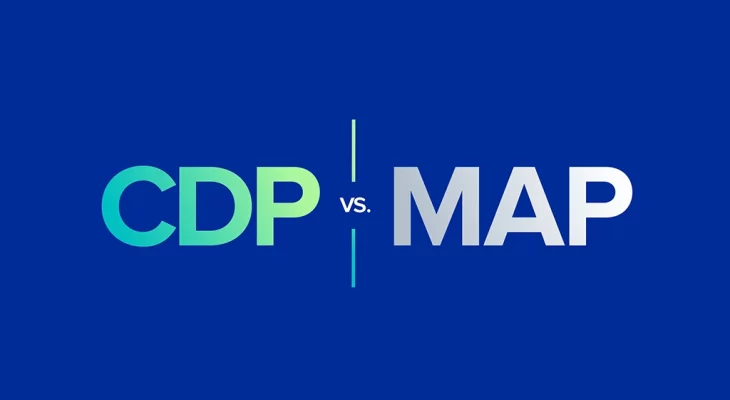Primary purpose: CDP vs. Marketing Automation Platform
Marketing Automation Platform: Marketing Automation Platforms (MAPs) make up the broadest category of technology we have discussed thus far, with hundreds or even thousands of these platforms on the market. They do exactly what the name says — automate marketing functions. Every individual platform has different features, different verticals they serve, etc. — so just searching for one based on what kind of business you manage can narrow your search considerably.
And generally, marketing automation is synonymous with campaign management — meaning most of these softwares intake new customer/user data and automatically (or manually) add the individual to a pre-built campaign. Some systems are more sophisticated than others and will adjust the communication flow depending on activity and lifecycle stage, but most require manual list pulling and work for a marketing team to function.
Some of the larger marketing automation players are actually two tools in one — typically a CRM (you can learn more about CRMs here) attached to a campaign management system. For businesses just starting out, with little customer data and a smaller budget, that can be a great option to ramp up campaigns, but marketers soon begin to feel restricted by the limited options these systems offer and the manual time drains involved in managing the platform.
CDP: A Customer Data Platform, or CDP, as defined by the CDP Institute, is “packaged software that creates a persistent, unified customer database that is accessible to other systems.” Essentially, CDPs take all of your different data sources and unify them into a ‘Single Customer View’. This enables businesses to move past looking at their data on a channel by channel (or even departmental) basis and allows marketers and other employees to gain access to a holistic view of every customer.
As channels and data sources have expanded in the 21st century, the gap between marketers and the data they need to be successful has grown. Often times organizations will face significant roadblocks in the form of ownership struggles and back-and-forth between data science/engineering teams and marketing teams struggling to define the rules of engagement with customer data. To combat these challenges, CDPs were built to provide marketers with data access, activation, control, and speed. Their sole focus is helping marketers deliver more relevant, responsive customer experiences by activating customer data in real-time while cutting out the time-consuming, manual work typically required (and tug of war with data scientists).
Unlike previous platforms we’ve discussed in this series, the average CDP and marketing automation platform will not have overlap. But, both of these platforms are beginning to evolve and iterate — and that may change. Increasingly, marketing automation platforms offer some sort of database within the platform (though these will not rival the complexity or scale of CDPs) and certain CDPs, like the SmartHub CDP, is offering a full-service solution for marketers from data unification to predictive intelligence to marketing automation, all in one platform.



